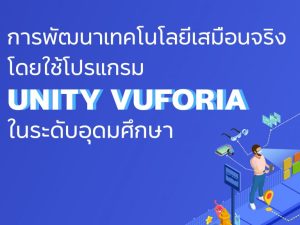
Augmented Reality in Higher Education using Unity and Vuforia
by Universiti Sains Malaysia, Malaysia
About this course
You have come to the right place. Learn the easiest way of techniques required for building fully functional Augmented Reality. In this course you will learn what?, who?, why?, when? and how? virtual, augmented and mixed reality is used in higher education. For this course you will need to install Unity, Microsoft Visual and Android Studio.
What you'll learn
Learning Outcomes
By the end of this module, you will be able to:
Describe the evolution and revolution of what makes virtual, augmented and mixed reality today. Define and differentiate briefly the types of virtual reality, augmented reality and mixed reality in higher education.Compare and contrast between virtual reality, augmented reality and mixed reality in their strength and weaknesses.Assess and evaluate the used of virtual reality, augmented reality and mixed reality in higher education. Construct and create an augmented reality using Unity and Vuforia in higher education.
Course Syllabus
Module 1 – Introduction
The Evolution and Revolution of what makes virtual, augmented and mixed reality today.
History of Virtual Learning Environments in Higher Education.
Module 2 – Definitions of VR, AR and MR in Higher Education
Definition of VR , AR and MR in Higher Education.List the tools (softwares) used in making VR, AR and MR in Higher EducationDifferentiate between VR, AR and MR in Higher Education.
Module 3 – Compare and Contrast between the strength and weaknesses VR, AR and MR in Higher EducationStrength and Weakness of VR, AR and MR in Higher Education
Examples of VR, AR and MR Laboratory in Higher Education
Module 4 – Assess and evaluate the used of VR, AR and MR in Higher Education
Types of VR, AR and MR being used in Higher Education
Some related research done on VR, AR and MR in Higher Education
Module 5 – Construct and create AR using Unity 3D and Vuforia Conclusion
เกณฑ์การวัดและประเมินผลในรายวิชา
- Length
- Price
- Level
- Target Group
- How To Pass
- Certificate
- 4 Weeks, 2 hours per week
- Free
- Introductory
- Student / General public
- More than 70 %
- Yes
Lecturer

Assoc. Prof. Dr. Rozinah Jamaludin
Universiti Sains Malaysia, Malaysia
อาจารย์รุศดา ณัฐภาสวิรตา
Universiti Sains Malaysia, Malaysia
